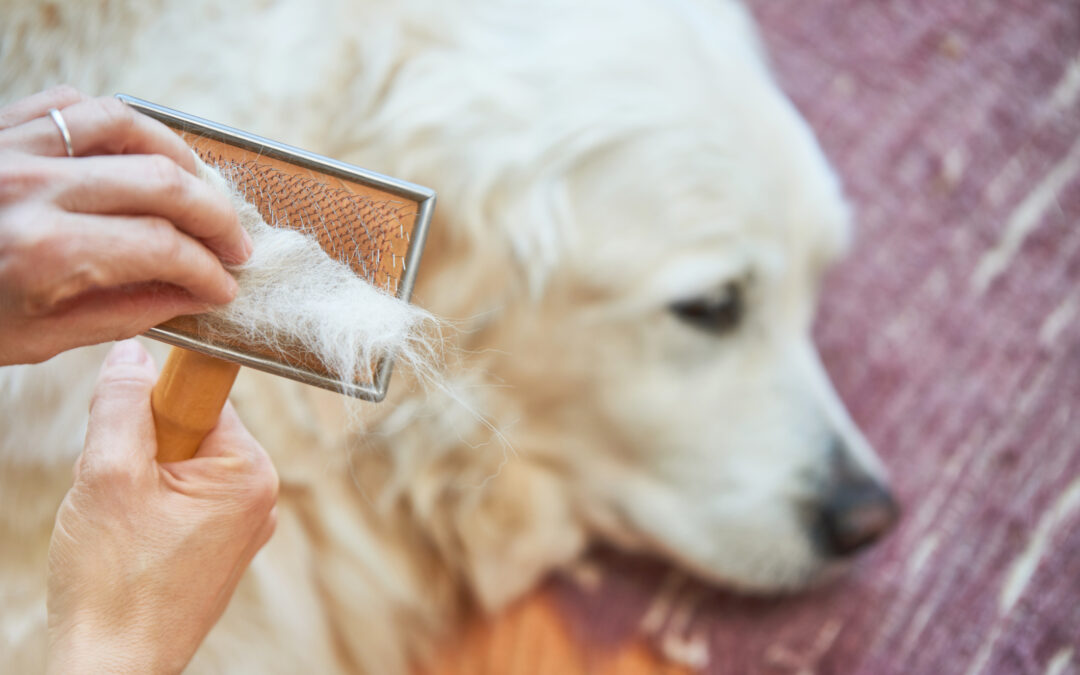
When is Dog Shedding Season? Essential Insights You Need to Know
Share
As a dedicated pet owner, you may find yourself asking, when does dog shedding season occur, and what does it mean for your beloved companion? Shedding is a normal part of a dog's life, yet knowing the timing and causes can help you better cater to your pet's grooming needs. By understanding the dog shedding season, you can ensure your home stays tidy while keeping your pet comfortable.
Dog shedding season often varies based on a dog's breed, the climate, and even the conditions inside your home. Generally, most dogs tend to shed during two main seasons: spring and fall. By being aware of these key periods, you can enhance your dog's well-being and comfort.

Understanding Shedding in Dogs
Concerns about shedding are common among health-conscious pet owners. Shedding is a natural occurrence where old or damaged fur falls out, making way for healthier growth. This process is influenced by various factors, including your dog's overall health, diet, and the time of year.
What Causes Shedding?
Shedding in dogs is primarily triggered by hormonal changes, shifts in weather, and specific health considerations. During seasonal transitions, hormonal fluctuations prompt many breeds to lose their undercoat, especially before the warm summer months or colder winter. Regular grooming can also help manage the excess fur produced during these shedding periods.

When Does Shedding Occur?
Keep in mind that the dog shedding season can differ from one breed to another. While the majority of dogs tend to shed during the spring and fall, certain breeds may experience distinct shedding patterns. For example, double-coated breeds like Huskies can face heavy shedding up to two times a year.
Shedding Patterns in Various Breeds
- Short-haired breeds: These dogs often shed year-round but usually experience increased shedding during spring and fall.
- Long-haired breeds: These breeds typically shed less often but can develop tangles and mats during shedding seasons, necessitating more frequent grooming.
- Hypoallergenic breeds: Although these breeds are marketed as lower-shedders, they do still lose hair, just in smaller amounts.

Preparing for Shedding Season
As shedding season approaches, it's essential to get your home and grooming routine ready. Here are some practical tips for health-conscious pet owners:
- Regular Grooming: Establish a grooming schedule to minimize the amount of fur around your home. A quality brush suited for your dog's coat type can make a significant difference.
- Healthy Diet: Providing a nutritious diet can promote healthy skin and fur, reducing the chance of excessive shedding.
- Hydration: Ensure your dog stays hydrated, especially during warmer weather, as it plays a vital role in maintaining good skin health.

Effectively Managing Shedding
Take charge of managing your dog's shedding during these seasons. Regularly clean your living space, invest in pet-friendly furniture, and utilize vacuum cleaners specifically designed for pet hair to lighten your cleaning load.
For more helpful tips about managing shedding, you can read about shedding causes.
Health Considerations
While shedding is part of being a dog owner, excessive shedding can indicate underlying health issues. If you notice your dog shedding far beyond normal levels, especially outside the common shedding seasons, its wise to consult your veterinarian. Conditions such as allergies, skin infections, and hormonal imbalances could all lead to increased shedding and require professional attention.
FAQs About Dog Shedding Season
1. How long does the dog shedding season last?
Shedding season can last from several weeks to a few months, typically peaking in the spring and fall.
2. Do certain breeds shed more than others?
Absolutely! Breeds like Labrador Retrievers and German Shepherds are known to shed more than others. Double-coated breeds often have more pronounced shedding periods.
3. Can a dog's diet influence their shedding?
A well-balanced diet is crucial for maintaining your dog's coat health, which can help minimize excessive shedding.
Conclusion
Understanding when dog shedding season occurs is essential for health-conscious pet owners. By anticipating these changes and preparing accordingly, you can keep your dog comfortable and healthy throughout shedding periods. Whether youre regularly brushing your dog or making conscious feeding choices, your attention to these aspects will positively impact your pet in the long run.
For additional insights on dog shedding and overall pet health, consider exploring Spring Shedding Insights. Also, check out Cleaning Hooves or Gum Removal for more pet care tips.
As an Amazon Associate, I earn from qualifying purchases.
